Do you have a question about the E-FLITE Power 25 and is the answer not in the manual?
Guidelines for determining model power needs based on flying weight and desired performance level.
Demonstrates calculating minimum required input watts for a model based on weight and performance.
Tips for determining motor capability by calculating continuous and burst input watts.
Setup details and performance expectations for a 25-size scale ARF with specific motor, ESC, prop, and battery.
Setup details and performance expectations for a 25-size scale ARF with a different battery configuration.
Contact information for technical support via email or phone.
Procedure for returning a product for inspection or repair, including RMA process.
Information on receiving warranty service, including required proof of purchase.
Details on non-warranty repair costs, estimates, payment methods, and abandoned property.
The E-flite Power 25 Brushless Outrunner motor is designed to provide clean and quiet power for various model aircraft. It serves as an electric alternative to traditional glow engines, specifically tailored for 25-size sport and scale airplanes, as well as 15-size 3D airplanes. This motor is capable of delivering up to 550 watts of power, making it a strong contender for models requiring significant thrust. Its high-torque, direct-drive design offers a robust alternative to inrunner brushless motors, ensuring efficient power delivery.
One of the key usage features of the Power 25 is its versatility in installation. The external rotor design, coupled with a 5mm shaft, allows for easy reversal of the shaft. This means the motor can be adapted for various mounting configurations, such as inside the fuselage or extended forward for cowls, providing flexibility for different aircraft designs. The motor comes with a mount, prop adapters, and all necessary mounting hardware, simplifying the initial setup process. Its quiet and lightweight operation contributes to an enjoyable flying experience without the noise and weight penalties often associated with glow engines. The motor's construction includes high-quality components like ball bearings and a hardened steel shaft, ensuring durability and smooth operation over time. The slotted 12-pole outrunner design further enhances its performance characteristics.
Before operating the motor, it is crucial to determine the model's power requirements. This can be done by calculating watts (volts x amps) and then relating this to the model's flying weight to find the 'Input Watts Per Pound'. Guidelines are provided to help users match the motor's power output to the desired performance level, whether it's for minimum decent performance, trainer models, sport aerobatics, high-speed models, or unlimited 3D performance. These guidelines are based on typical parameters of E-flite motors and serve as a starting point, acknowledging that actual performance may vary with different motors, efficiencies, and prop sizes. Once the power requirements are established, users can select a suitable motor by considering its continuous and maximum burst current ratings, along with the compatible cell counts for batteries. The input power a motor can handle is determined by multiplying the average voltage (based on cell count) by the continuous or max burst current.
For optimal performance and longevity, proper cooling is essential, especially when operating at maximum current levels. The motor is designed to withstand a maximum operating temperature of 220 degrees Fahrenheit, but adequate cooling is required to prevent overheating. The maximum burst current duration is limited to 30 seconds, and sufficient time between burst intervals is necessary for the motor to cool down properly. Excessive use of burst current without proper throttle management can lead to overheating and potential damage to the motor, particularly during 3D and limited motor run flights.
The motor requires a sensorless brushless speed control for operation. Using an incorrect speed control can result in damage to both the motor and the ESC. When mounting, users must ensure that screws of the correct length are used to avoid damaging the internal components of the motor. Gold-plated brushless bullet connectors are recommended for connecting the motor wires to the ESC, and proper insulation with heat shrink tubing is vital to prevent short circuits. If the motor's rotation direction is reversed, simply switching any two motor wires will correct it. It is important never to cut the motor wires, as this is considered an improper modification that can lead to motor failure.
Maintenance features primarily revolve around careful handling and proper installation. The shaft can be reversed if needed, by carefully loosening set screws, removing collars and washers, and gently sliding the shaft through the motor. Extreme caution is advised during this process to avoid bending the shaft. Reinstalling all components correctly and ensuring set screws align with the flat spot on the shaft are critical. Disassembling the motor is not recommended, as it will void the warranty. Safety precautions emphasize that this is a sophisticated hobby product, not a toy, and requires caution, common sense, and basic mechanical ability. The outrunner motor case is a rotating part, so extreme care must be exercised during operation. Users should also consult propeller warning information for safety guidelines.
In terms of warranty, Horizon Hobby, Inc. guarantees the product to be free from defects in material and workmanship for one year from the purchase date. This warranty covers repair or replacement at Horizon Hobby's discretion but does not cover cosmetic damage, damage due to acts of God, accident, misuse, abuse, negligence, commercial use, modification, improper installation, operation, maintenance, or attempted repair by unauthorized service centers. The warranty is limited to the original purchaser and is not transferable. For warranty service, customers must provide an original sales receipt. Non-warranty repairs are also offered, with an estimate provided if the expense exceeds 50% of the retail purchase cost. Motors requiring inspection or repair should be shipped to the designated service center.
| Type | Brushless Outrunner |
|---|---|
| Max Current | 32A |
| Shaft Diameter | 5mm |
| Size | 25 |
| Continuous Current | 32A |
| Diameter | 35mm |
| Brushless ESC | 40A |
| Recommended Propeller | 12x6 |
| Overall Length | 48mm |
| KV Rating | 870 RPM/V |







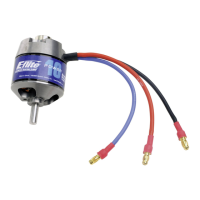
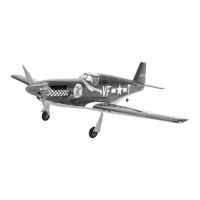
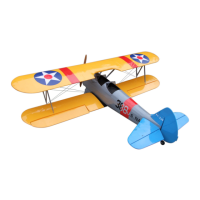
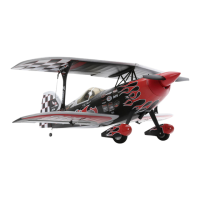
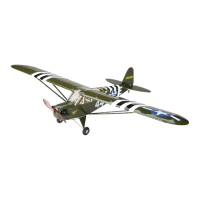
